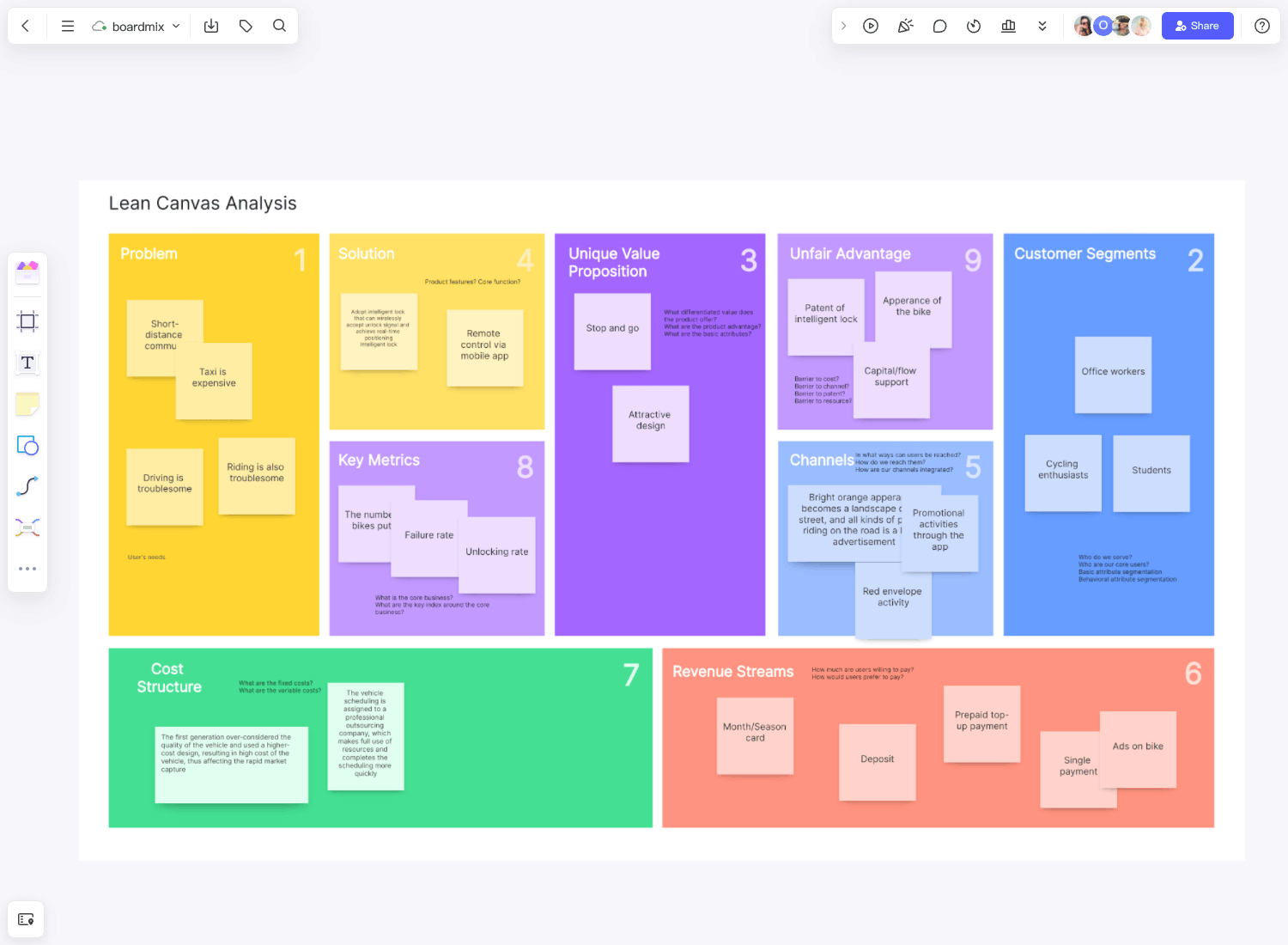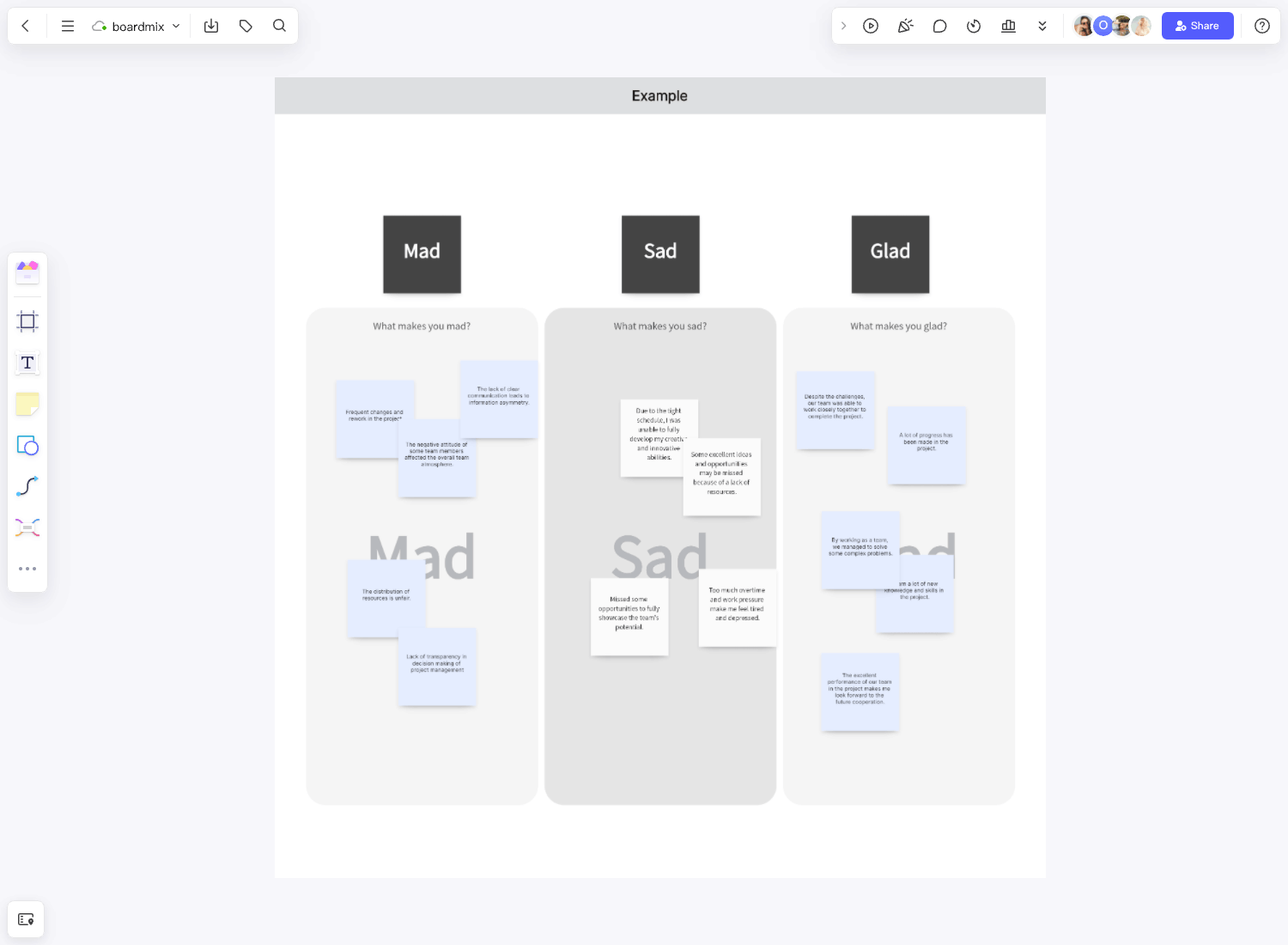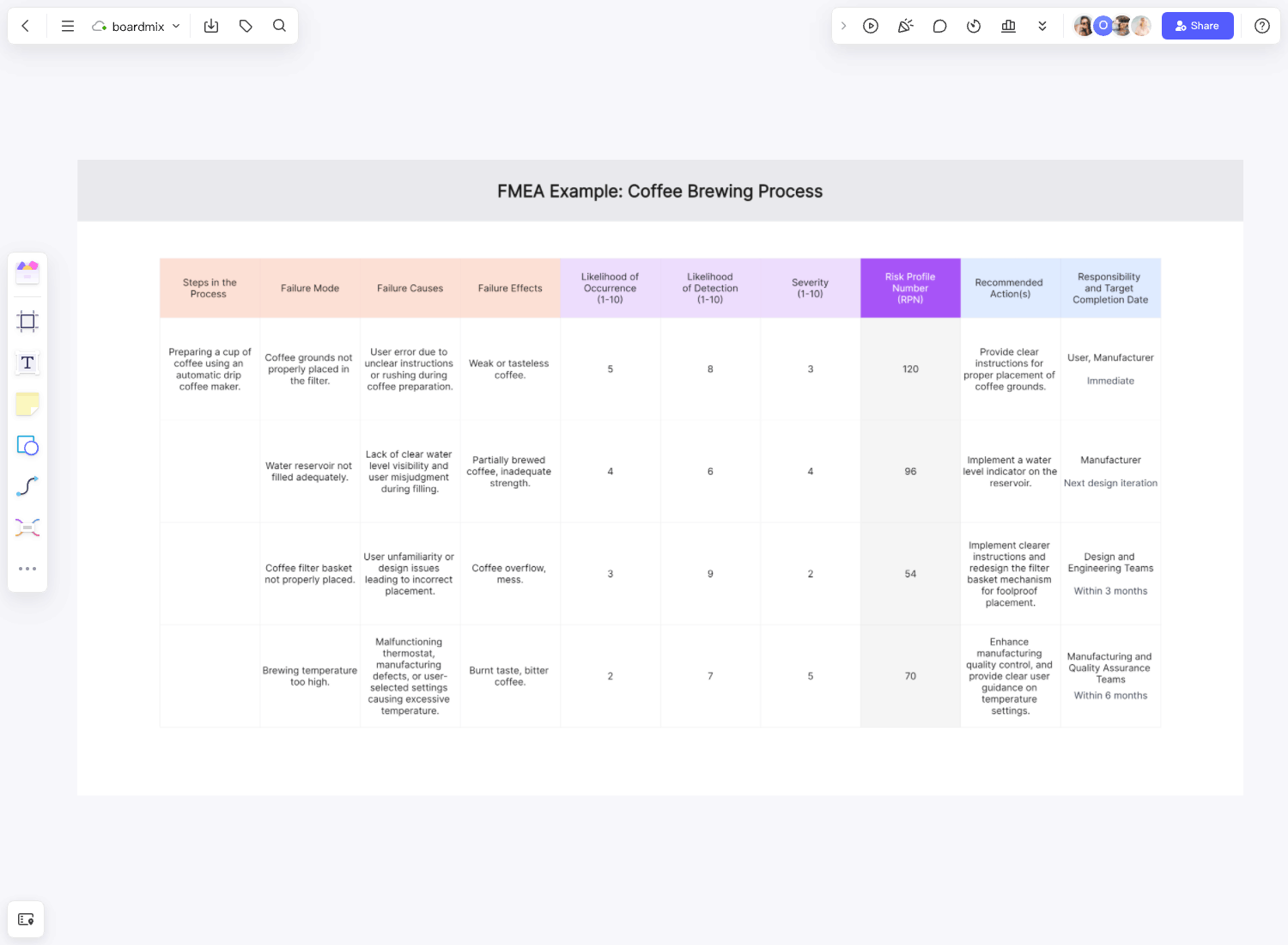In the ever-evolving world of software development, the constant quest is for methods and tools that can improve efficiency, enhance collaboration, and deliver superior outcomes. Amidst the burgeoning digital revolution, the innovative practice of Agile Development has taken center stage. We live in an era where digital transformation is the key to staying ahead. Alongside this transformation is a powerful tool that is steadily gaining momentum: the Online Whiteboard. This tool has been increasingly embraced for its capacity to augment Agile Development practices.

Click Here to Start a Free Whiteboard
Understanding Agile Development: The New Norm
Agile Development is not just a buzzword that's been thrown around in the tech industry lately. It has indeed become the new norm, setting a standard for how projects are handled and executed. But what exactly is Agile Development? Why has it gained such prominence? Let's delve deeper into this fascinating subject.
Agile Development, in its essence, is a methodology that promotes continuous iteration of development and testing throughout the software development lifecycle of the project. It's not a step-by-step process, but rather a dynamic approach that encourages adaptability and flexibility. This makes it particularly effective in handling unexpected changes or issues that may arise during the development process.
The rise of Agile Development can be attributed to its numerous advantages. For starters, it allows for faster delivery of functional software to the end-user. It also promotes teamwork and collaboration among team members, encouraging constant communication and feedback. This collaborative approach ensures that any issues or roadblocks are identified early on and addressed promptly, thereby minimizing delays or setbacks.
Moreover, Agile Development embraces change. In traditional methodologies, changes can often lead to delays and increased costs. However, in Agile Development, change is seen as an opportunity for improvement, not as a hindrance. This ability to adapt quickly to changes makes Agile Development highly efficient and effective.
In today's fast-paced tech world where user needs and market dynamics are constantly evolving, Agile Development's adaptive nature makes it an ideal choice for many organizations. It allows them to stay ahead of the curve by rapidly responding to market changes and delivering high-quality software that meets user needs.
What is Whiteboard in Agile?
In Agile Development, a whiteboard is a crucial tool used for visualizing work, tracking progress, and fostering collaboration among team members. It's often used in conjunction with sticky notes or cards to create what's known as a Scrum Board or Kanban Board.

A Scrum Board is used to track the progress of work within a specific sprint (a set period of time during which specific work has to be completed and made ready for review). The board is divided into several columns, typically "To Do", "In Progress", and "Done". Team members move their tasks (represented by cards or sticky notes) across these columns as they progress through them.
On the other hand, a Kanban Board is more fluid and can span multiple sprints. It visualizes the flow of work from inception to completion and helps teams identify bottlenecks in their processes. The board is divided into several columns representing different stages of the workflow, such as "Backlog", "In Progress", "Testing", and "Done".
Both types of boards serve to increase transparency and improve communication within the team. They also enable teams to adapt quickly to changes by providing a clear visual representation of work status and progress.
So, in essence, a whiteboard in Agile is more than just a tool; it's a powerful visual aid that facilitates better project management, collaboration, and continuous improvement.
The Role of Online Whiteboards in Agile Development
An Online Whiteboard serves as an intuitive, interactive platform, allowing multiple users to ideate, brainstorm, and collaborate in real-time, irrespective of geographical constraints. Whether you are conducting a sprint planning meeting, a daily stand-up, or a retrospective, an online whiteboard can significantly amplify your team's productivity and effectiveness.
A Canvas for Collaboration
Online Whiteboards offer a visual canvas that enables the Agile team to articulate their thoughts, break down complex issues, and visualize solutions. The drag-and-drop functionality, along with tools like sticky notes and flowcharts, simplify task mapping, backlog management, and iteration planning.

Boosting Engagement through Interactivity
Interactive elements like voting polls and timers ensure everyone's active participation. They encourage engagement and stimulate creativity within the Agile team, creating a vibrant and dynamic working environment. Moreover, since Agile principles highly value individuals' interactions, an online whiteboard facilitates just that - effective and fruitful interaction.
A Repository of Knowledge
Online Whiteboards also serve as a central repository of information that can be accessed and edited by any team member at any time. This ensures a single source of truth, mitigating discrepancies or confusions that may arise due to multiple versions of documents or spreadsheets.
How does the Agile Board Help Teams to Work on Product Development?
The Agile board, whether it's a Scrum Board or a Kanban Board, plays a pivotal role in product development by providing a visual representation of the work to be done, the work in progress, and the work that has been completed.

Here's how it helps teams:
-
Transparency: By visualizing all tasks on the board, everyone on the team knows what needs to be done, who is working on what, and what has already been accomplished. This transparency fosters accountability and helps avoid misunderstandings or miscommunications.
-
Collaboration: The Agile board encourages collaboration by making it clear where help may be needed. If a task has been in the "In Progress" column for too long, it signals to the team that there may be a bottleneck or an issue that needs addressing.
-
Prioritization: Tasks on the Agile board can be prioritized. This helps teams focus on high-value tasks first and ensures that everyone understands the project's priorities.
-
Efficiency: By providing a visual overview of all tasks and their status, the Agile board helps identify bottlenecks or inefficiencies in the workflow process. Teams can then take steps to address these issues and improve their workflow.
-
Adaptability: Agile boards make it easy to add, remove, or rearrange tasks as needed. This flexibility is key in Agile development where adaptability to change is highly valued.
-
Continuous Improvement: After each sprint, teams can review the Agile board to understand what went well and what didn't. This retrospective analysis promotes continuous improvement - another core principle of Agile development.
In summary, an Agile board serves as a central hub for planning, tracking progress, promoting collaboration, and driving efficiency in product development teams adopting an Agile approach.
Getting the Most Out of Your Online Whiteboard
The potential of an online whiteboard in enhancing Agile Development is tremendous. However, to extract maximum benefit from it, you need to utilize it smartly and effectively.
Tailor it to Your Needs
Every Agile team operates differently. The key to successful integration of an online whiteboard lies in customizing it according to your specific needs. Whether it is by adding custom fields or tweaking the layout, make sure your board complements your Agile processes rather than obstructing them.
Train Your Team
Ensure that all members are proficient in using the whiteboard. This includes understanding its features and functionalities as well as effectively employing it to foster collaboration.
Establish Guidelines
Set clear guidelines for how to use the board – this includes how to create, edit, move, and delete content. This would prevent the board from becoming cluttered and chaotic.
Keep it Updated
Ensure the board reflects the current status of the project. Regular updates will ensure it remains a reliable and credible source of information.
The path to successful Agile Development lies in continuous improvement. In this quest for improvement, online whiteboards prove to be game-changers. Their visual nature, combined with collaborative and interactive features, offers a powerful platform that can revolutionize your Agile practices. By adopting an online whiteboard, you are not just integrating a tool into your workflow; you are creating an environment that encourages interaction, fosters creativity, and stimulates continuous growth.
As Agile methodologies continue to evolve, they will further intertwine with technologies that foster collaboration and communication. In this interconnected scenario, tools like online whiteboards will only gain prominence, reinforcing their value as indispensable assets in Agile Development.
Why Choose BoardMix Online Whiteboard for Agile Development
BoardMix Online Whiteboard is an excellent choice for Agile Development due to its numerous features and benefits that specifically cater to the needs of Agile teams.

Click Here to Start a Free Whiteboard
Here are some reasons why it stands out:
-
Real-time Collaboration: BoardMix allows multiple team members to work on the whiteboard simultaneously, fostering real-time collaboration. This feature is particularly useful during sprint planning meetings or daily stand-ups where team members need to update their tasks and progress.
-
Flexibility: With BoardMix, you can easily create a Scrum Board, a Kanban Board, or any other custom board that suits your team's workflow. You can add, remove, or rearrange tasks as per your project's evolving needs.
-
Visual Clarity: The clean interface and visually appealing design of BoardMix make it easy to understand and use. It helps in clearly visualizing the workflow, identifying bottlenecks, and tracking progress towards goals.
-
Integration Capabilities: BoardMix can be seamlessly integrated with various project management tools and communication platforms. This ensures all relevant information is accessible in one place, reducing the need for switching between different applications.
-
Accessibility: As an online whiteboard, BoardMix can be accessed from anywhere at any time. This makes it ideal for remote teams or organizations that have flexible working arrangements.
-
Record & Playback Feature: This unique feature allows you to record the changes made on the board and play them back whenever required. It's a great tool for retrospective analysis and for new team members who wish to understand the project's history.
-
Security: BoardMix takes data security seriously. It provides robust security measures to ensure your project information is safe and secure.
By choosing BoardMix Online Whiteboard for Agile Development, teams can enhance their productivity, streamline their workflows, and foster a culture of transparency and continuous improvement.
FAQs about Online Whiteboards for Agile
What are the Columns of the Agile Board?
The columns of an Agile board represent the stages that a task or user story passes through from inception to completion. While these columns can be customized based on a team's specific workflow, they typically include the following:
-
Backlog: This is where all new tasks or user stories are initially placed. These are items that need to be addressed but have not yet been scheduled.
-
To Do or Selected for Development: Once tasks have been prioritized and scheduled for a particular sprint, they move into this column.
-
In Progress: When team members actively start working on a task, it moves into this column.
-
Testing or Review: After the work on a task is completed, it moves into this column where it is tested or reviewed to ensure it meets the required standards and criteria.
-
Done: Once a task has been tested and approved, it moves into this column, signifying its completion.
Remember, these are just typical columns seen in many Agile boards. Some teams might also have columns like "Blocked" for tasks that can't progress due to some obstacles, or "Ready for Release" for tasks that are done but not yet released in the live environment. The key is to design the board in a way that best reflects your team's process and workflow.
What are the Benefits of Whiteboards for Agile Teams?
Online whiteboards offer numerous benefits for Agile teams, enhancing their productivity and collaboration. Here are some of the key benefits:
-
Real-time Collaboration: Online whiteboards allow team members to collaborate in real-time, regardless of their geographical location. This is particularly beneficial for remote or distributed teams.
-
Visual Management: They provide a visual representation of tasks, progress, and workflows, making it easier for everyone to understand the project's status at a glance.
-
Flexibility: Online whiteboards can be easily customized to fit the specific needs of a project or team. Whether it's a Scrum Board, Kanban Board, or any other format, you can design it as per your requirements.
-
Accessibility: As they are online, these whiteboards can be accessed anytime, anywhere, facilitating continuous work progress.
-
Integration Capabilities: Many online whiteboards can be integrated with other tools like project management software or communication platforms, streamlining workflows and information sharing.
-
Record & Playback Features: Some online whiteboards offer features to record sessions or track changes over time, which can be useful for retrospective analysis or for team members who missed a session.
-
Enhanced Engagement: The interactive nature of online whiteboards can lead to increased engagement during meetings and brainstorming sessions.
In summary, online whiteboards are an excellent tool for Agile teams to enhance their communication, collaboration, and overall efficiency.
Is there a free online whiteboard for agile team?
Yes, there are several free online whiteboards available that Agile teams can utilize. These platforms offer a variety of features designed to facilitate collaboration, task management, and workflow visualization. Here are a few examples:
-
BoardMix: BoardMix is a popular tool that uses a card-based system for managing and tracking tasks. It's highly customizable, allowing you to create columns that represent different stages of your workflow.
-
Asana: Asana's free version allows you to create tasks, assign them to team members, set deadlines, and more. It also includes a basic dashboard for visualizing your team's progress.
-
Miro: Miro offers a free plan that includes unlimited collaborators and three editable boards. It's an excellent tool for brainstorming sessions, with features like sticky notes, freehand drawing, and more.
-
Jira: While Jira isn't entirely free, it does offer a free version for small teams (up to 10 users). It's widely used in software development for issue tracking and project management.
-
Microsoft Whiteboard: This is a free tool that provides an open canvas where you can draw, add text, and place sticky notes. While it doesn't have the same task management features as some other options, it's great for brainstorming and collaborative sketching.
Remember that while these tools are free, they often offer premium versions with additional features. Always make sure to review the specific offerings of each platform to find the one that best suits your team's needs.













